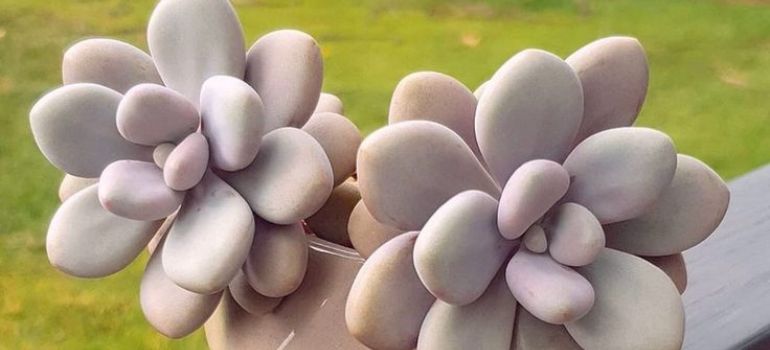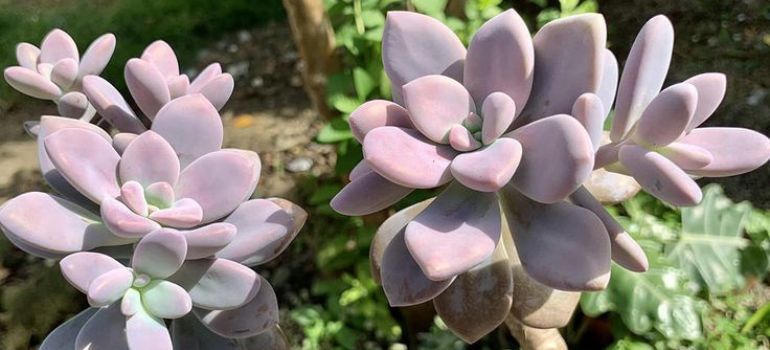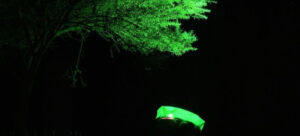Succulents have taken the gardening world by storm, offering a delightful array of shapes, colors, and textures. Among the vast succulent kingdom, Graptopetalum amethystinum and Pachyphytum oviferum stand out as distinct beauties. Let’s delve into the captivating world of these succulents, exploring their unique characteristics, cultivation tips, and the perennial question: Graptopetalum Amethystinum vs. Pachyphytum Oviferum – which one is right for you?
Graptopetalum Amethystinum
Characteristics and Appearance
Graptopetalum amethystinum, commonly known as the Lavender Pebbles, showcases stunning rosettes with a mesmerizing combination of lavender and pink hues. The fleshy leaves form tight clusters, creating a visually striking plant.
Ideal Growing Conditions
For optimal growth, Graptopetalum amethystinum thrives in well-draining soil, allowing the roots to breathe. These succulents enjoy basking in bright sunlight, making them perfect additions to outdoor gardens and sunny windowsills.
Common Uses in Landscaping
The unique coloration of Graptopetalum amethystinum makes it a sought-after choice for succulent arrangements and rock gardens. Its low-maintenance nature adds an extra layer of appeal for both beginners and experienced gardeners.
Pachyphytum Oviferum
Description and Distinctive Features
Known as Moonstones or Sugaralmond Plant, Pachyphytum oviferum boasts chubby, ovate leaves with a silvery-blue tint. Its compact rosette formation and striking appearance make it a favorite among succulent enthusiasts.
Optimal Environment for Growth
Creating a thriving environment for Pachyphytum oviferum involves providing well-draining soil, moderate sunlight, and occasional watering. These succulents are excellent choices for container gardening and indoor displays.
Practical Applications in Gardens
Pachyphytum oviferum’s unique look enhances garden aesthetics, adding a touch of elegance. Its versatility allows it to blend seamlessly with other succulents or take the spotlight as a solo specimen.
Contrasting Features
Leaf Shape and Color
While Graptopetalum amethystinum flaunts rosettes with lavender-pink tones, Pachyphytum oviferum charms with silvery-blue, chubby leaves. The distinct shapes and colors make them easily distinguishable in any collection.
Size and Growth Patterns
Graptopetalum amethystinum tends to spread out, creating ground cover with tightly packed rosettes. On the other hand, Pachyphytum oviferum stays compact, making it suitable for smaller spaces and containers.
Flowering Habits
Graptopetalum amethystinum produces delicate star-shaped flowers, adding an extra layer of charm during the blooming season. Pachyphytum oviferum showcases clusters of small, white flowers, creating a delightful display.
Cultivation Tips
Soil Requirements
Both succulents thrive in well-draining soil mixes, preventing waterlogged conditions. A mix of cactus soil and perlite provides the ideal foundation for healthy root development.
Watering Needs
Moderation is key when it comes to watering. Overwatering can lead to root rot, so allow the soil to dry out between watering sessions. Pachyphytum oviferum, in particular, prefers slightly drier conditions.
Sunlight Preferences
Placing Graptopetalum amethystinum and Pachyphytum oviferum in bright, indirect sunlight ensures vibrant colors and compact growth. However, acclimate them gradually to prevent sunburn.
Common Mistakes in Care
Overwatering Issues
Novice succulent enthusiasts often fall into the trap of overwatering. These plants prefer drought-like conditions, so resist the urge to water too frequently.
Sunlight Neglect
Insufficient sunlight can lead to leggy growth and a loss of vibrant colors. Ensure your succulents receive adequate light for a healthy appearance.
Soil-Related Challenges
Using heavy, water-retaining soil is a common mistake. Opt for well-draining soil mixes to prevent waterlogged roots and related issues.
Landscaping Ideas
Combining Graptopetalum Amethystinum and Pachyphytum Oviferum

Create eye-catching succulent arrangements by combining the unique textures and colors of Graptopetalum amethystinum and Pachyphytum oviferum. The contrasting features add depth and visual interest.
Creating Visually Appealing Succulent Arrangements
Experiment with different container sizes and shapes to showcase the beauty of these succulents. From hanging baskets to terrariums, the possibilities are endless.
Unique Qualities
Graptopetalum Amethystinum’s Resilience
This succulent’s ability to withstand various conditions makes it an excellent choice for beginners. It can endure periods of neglect and still thrive.
Pachyphytum Oviferum’s Adaptability
Pachyphytum oviferum’s adaptability to indoor environments and lower light levels makes it a versatile choice for those with limited outdoor space.
Why Enthusiasts Love These Succulents
The charm of Graptopetalum amethystinum and Pachyphytum oviferum lies in their unique aesthetics, easy care, and the joy they bring to gardening enthusiasts.
Popular Varieties
Notable Subspecies of Graptopetalum Amethystinum
Explore variations like Graptopetalum amethystinum ‘Superbum’ with larger rosettes and intensified colors. Each subspecies adds a unique flair to succulent collections.
Varieties Within the Pachyphytum Oviferum Family
From Pachyphytum oviferum ‘Pink Moonstones’ to ‘Silver Moon,’ the diverse varieties offer options for collectors seeking specific color variations.
Graptopetalum Amethystinum vs. Pachyphytum Oviferum: Which to Choose?
Factors to Consider When Selecting Succulents
- Aesthetic Preferences: Choose based on the color palette and leaf shapes that appeal to you.
- Space Availability: Consider the size of your gardening space or containers.
- Indoor vs. Outdoor: Pachyphytum oviferum is more adaptable to indoor environments.
- Climate Considerations: Graptopetalum amethystinum may be more resilient in certain climates.
Matching Preferences to the Right Plant
Both Graptopetalum amethystinum and Pachyphytum oviferum are delightful choices; selecting the right one depends on your personal preferences and gardening conditions.
Success Stories
Real-Life Experiences of Succulent Enthusiasts
Enthusiasts share tales of successfully cultivating these succulents, emphasizing the joy they bring and the sense of accomplishment in nurturing unique plants.
Testimonials on the Joys of Cultivating These Plants
From beginners to seasoned gardeners, the satisfaction of watching Graptopetalum amethystinum and Pachyphytum oviferum thrive is a common theme in the gardening community.
Addressing Myths
Dispelling Common Misconceptions About Care
Separate fact from fiction by addressing myths about overwatering, sunlight requirements, and overall care. Educate readers on proper succulent maintenance.
Setting the Record Straight on Challenges
Acknowledge the challenges but highlight the rewarding aspects of overcoming them. Encourage perseverance in the face of common succulent care hurdles.
Sustainability Aspect
Graptopetalum Amethystinum and Pachyphytum Oviferum in Eco-Friendly Gardening
Explore how these succulents contribute to sustainable gardening practices, requiring less water and promoting biodiversity.
Promoting Sustainable Practices in Succulent Cultivation
Encourage readers to adopt eco-friendly habits in succulent care, minimizing environmental impact while enjoying the beauty of Graptopetalum amethystinum and Pachyphytum oviferum.
Frequently Asked Questions
The ideal mix includes cactus soil and perlite to ensure proper drainage.
Water sparingly, allowing the soil to dry out between watering sessions.
Yes, especially Pachyphytum oviferum, which adapts well to indoor environments.
Watch out for aphids and mealybugs; regularly inspect and treat if necessary.
While generally non-toxic, it’s advisable to keep them out of reach of pets and small children.
Conclusion
In the delightful realm of succulents, the choice between Graptopetalum amethystinum and Pachyphytum oviferum is a matter of personal taste and gardening conditions. Embrace the uniqueness of each plant, experiment with arrangements, and revel in the joy of cultivating these captivating succulents. Whether you opt for the Lavender Pebbles or the charming Moonstones, the world of succulents promises endless possibilities.



